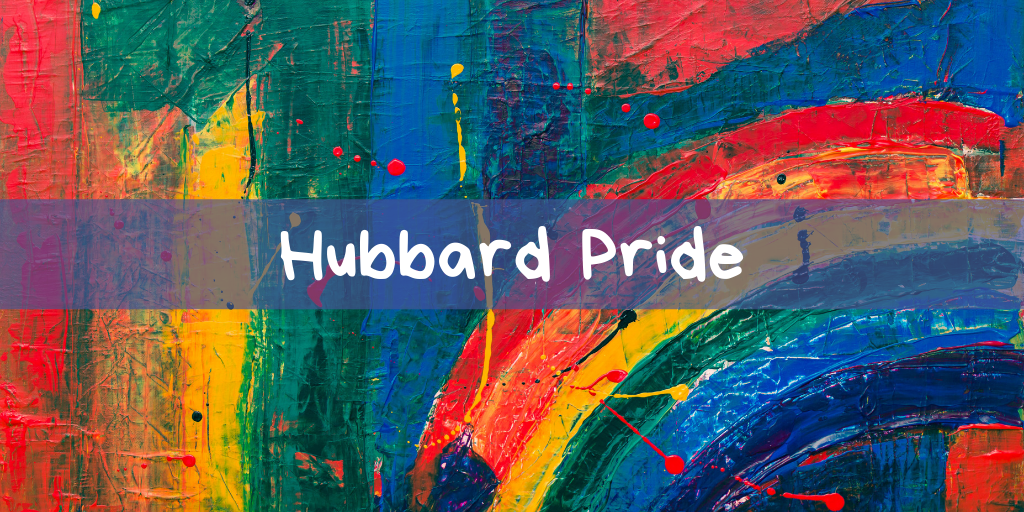The Pride of Hubbard, Part II

Welcome to part II of our Pride Month series! Last time around, we touched upon the origins of the Pride movement before moving onto a little profile of Karen Fuentes – a broker here at Hubbard. If you haven’t yet, make sure to check it out!
It’s a Monday, the weather is doing its best Martin Riggs impression, and I’m making dated Lethal Weapon references. For many, vacations are around the corner as June reaches its halfway mark. However, that also means that we are halfway through Pride Month – and what better time to learn a little bit more about this movement?
Have you ever wondered where the rainbow flag comes from? The story behind it is rather interesting.
Rainbow flags have been around for ages; however, it wasn’t until 1978 that they first became associated with the Pride movement.
Gilbert Baker was born in rural Kansas, served in the US Military, and was an openly gay activist. After an honorable discharge from the military, Gilbert taught himself to sew. In 1974, though, the cogs really began to turn.
In 1974, Gilbert Baker met perhaps one of the most historically influential people involved in the early Pride movements – Harvey Milk. It was Harvey Milk who challenged Gilbert to compose a symbol of pride for the LGBTQ community. Three years later, on June 25 1978, the rainbow flag made its debut.
The flag itself is composed of 8 colours: Hot pink, red, orange, yellow, green, turquoise, indigo, and violet. These colours were chosen deliberately and each one was assigned a meaning – pink represented sexuality, red represented life, and orange represented healing. Yellow, green, and turquoise represented sunlight, nature, and art respectively. Finally, indigo and violet represented serenity and spirit.
However, it wouldn’t be until a few months later that the demands for the flag skyrocketed.
November 27, 1978. Dan White – disgruntled by recent events regarding his position on the San Francisco Board of Supervisors – entered City Hall through a basement window so as to avoid metal detectors. There was a press conference ready to take place that day to announce White’s replacement. Harvey Milk was present.
Harvey Milk, along with then-Mayor George Moscone, were shot dead in cold blood by Dan White on that day – murders fueled by hate. What followed was a surge in demand for Pride flags as San Francisco prepared for the inevitable aftermath.
Pride may have become a celebration of life, it may be vibrant and colourful – but it has a past filled with struggle, agony, and sacrifice. This is why, at Hubbard, we want to make sure these themes are celebrated – not only for those who have sacrificed, but so that their sacrifices in the name of diversity and inclusivity will not be forgotten.
One such person who is keen on celebrating these values is Hubbard’s own Maria McCreadie.
“I think Pride is a celebration of identity” she said. “We have come so far from the days of segregation and Pride seems to be a celebration of that, a celebration against persecution.”
It is indeed true that the celebrations involved in this movement aren’t just limited to identity – but rather an outward expression of joy at being able to live freely without the worry of discrimination.
“I had friends growing up who were part of the LGBTQ community and they were not able to be open about their identities until much later on in life,” said Maria. “I think that’s sad.”
“It’s sad we live in a world where people are still discriminated against,” she lamented.
The Pride movement, though, is not merely beneficial only for those directly involved in it. There is something there for anyone who has faced oppression or discrimination.
“As a woman, I’ve had to break through the glass ceiling – it has not been easy.” Seeing these movements around her where other people have struggled just like she has – even if not for the same reasons – has been helpful in getting her to overcome her own obstacles.
“We are who we are – we shouldn’t be judged for it. The only thing that should be judged is our merit,” she concluded.
Ultimately, that is the goal – that should be the goal for society. To only base opinions off of merit and not race, gender, religion, or sexuality.
According to Maria, the future looks bright, “We are on the path to more inclusivity and being more diverse.” However, certain things still need to be paid attention to. “We need to make sure we all make the right decisions and put the right people in power. People who will unite us and not divide us,” she said.
The future is especially important to Maria because of her little daughter. “I want my daughter to be who she wants to be and for the world to welcome her regardless of who she is,” she expressed.
Finally, Maria concluded, “I hope people going through any kind of struggle don’t give up and stay strong. Don’t look ahead at just the immediate future but also look at the bigger picture – the years ahead.”
Diversity and inclusivity are clearly important at Hubbard. From the diverse work-force to the general office culture, these themes are interlaced within the very fabric of the environment.
As Pride Month comes to an end, it is important to use this remaining time to push ahead with raising awareness and celebrating progress.
There is yet more to come in this series and we hope to offer more insights into the environment at Hubbard all the while celebrating diversity and inclusivity. Stay tuned!
